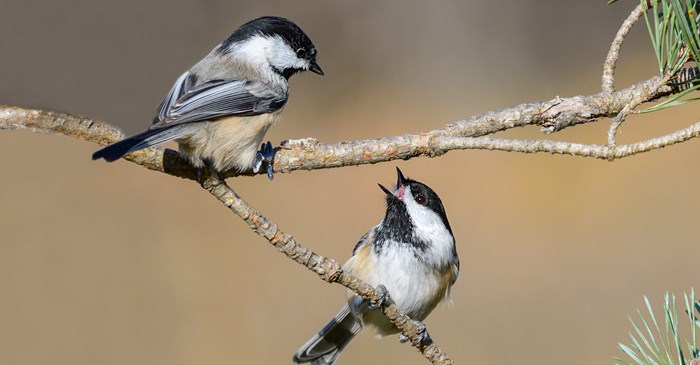If you’ve been watching chickadees for any length of time, you've probably caught by now they have much to say. Scientists have discovered some complexities in their calls you don’t find in other animal species.
In studies of Carolina Chickadees, researchers were able to suss out specific messages in their chicka-dee-dee calls by measuring the pitch, as explained in American Scientist. In the study, scientists flew in a model bird of prey on a wire. When the chickadees spotted a predator flying in, they would sound a higher-pitched call. Researchers theorize that the higher pitch makes it more difficult for the enemy to find them, but allows them to still get the warning out to other birds.
Then when scientists placed a model predator on a tree branch, and broadcast its calls on a speaker, the Carolina Chickadees modulated to a lower-pitched call, which got other birds to gather around to mob their enemy and get it to fly away. When landing on bird feeders, they sounded these same calls, so in chickadee-speak, this range means, “Hey, everyone, look over here!”
Finally, calls that were somewhat lower in pitch were sounded in flight, which scientists think may be their method to keep the group together. Which is relevant, because chickadees in the winter forage for food in mixed flocks.
They’ve also discovered that groups and individual chickadees have variations in their calls, so they can tell each other apart. In the spring, like other songbirds, male chickadees sing to attract and win over a mate, and scientists also found meaningful variations between individual birds. Geographical differences showed up in groups of chickadees studied in Canada, plus the pitch they used seemed to correlate with the male’s dominance and ranking in a flock.
If you have an ear for music and a love for chickadees, fill your feeders with Lyric Chickadee Mix, and see if you can pick up the subtle differences as these birds go about their day.
